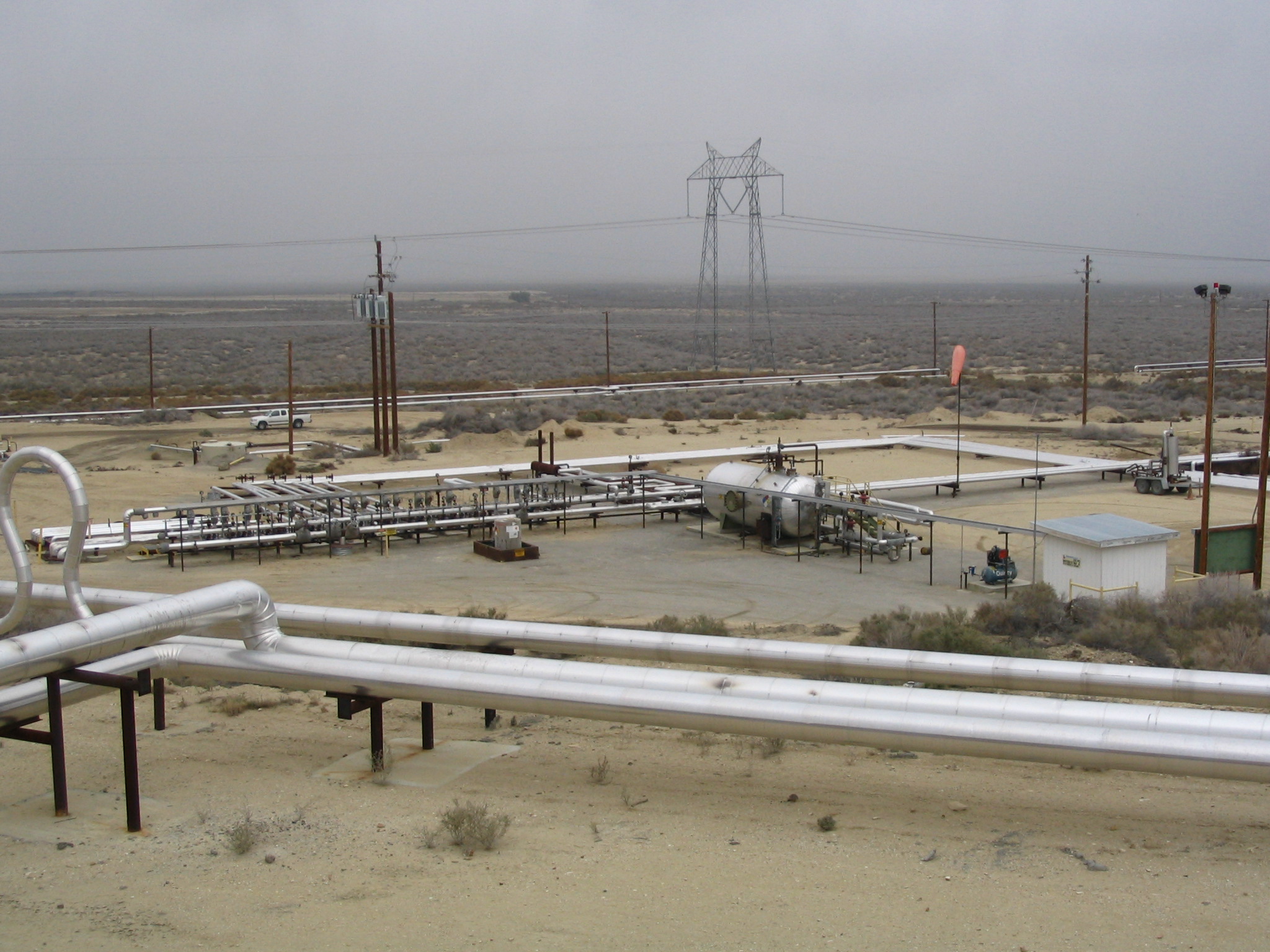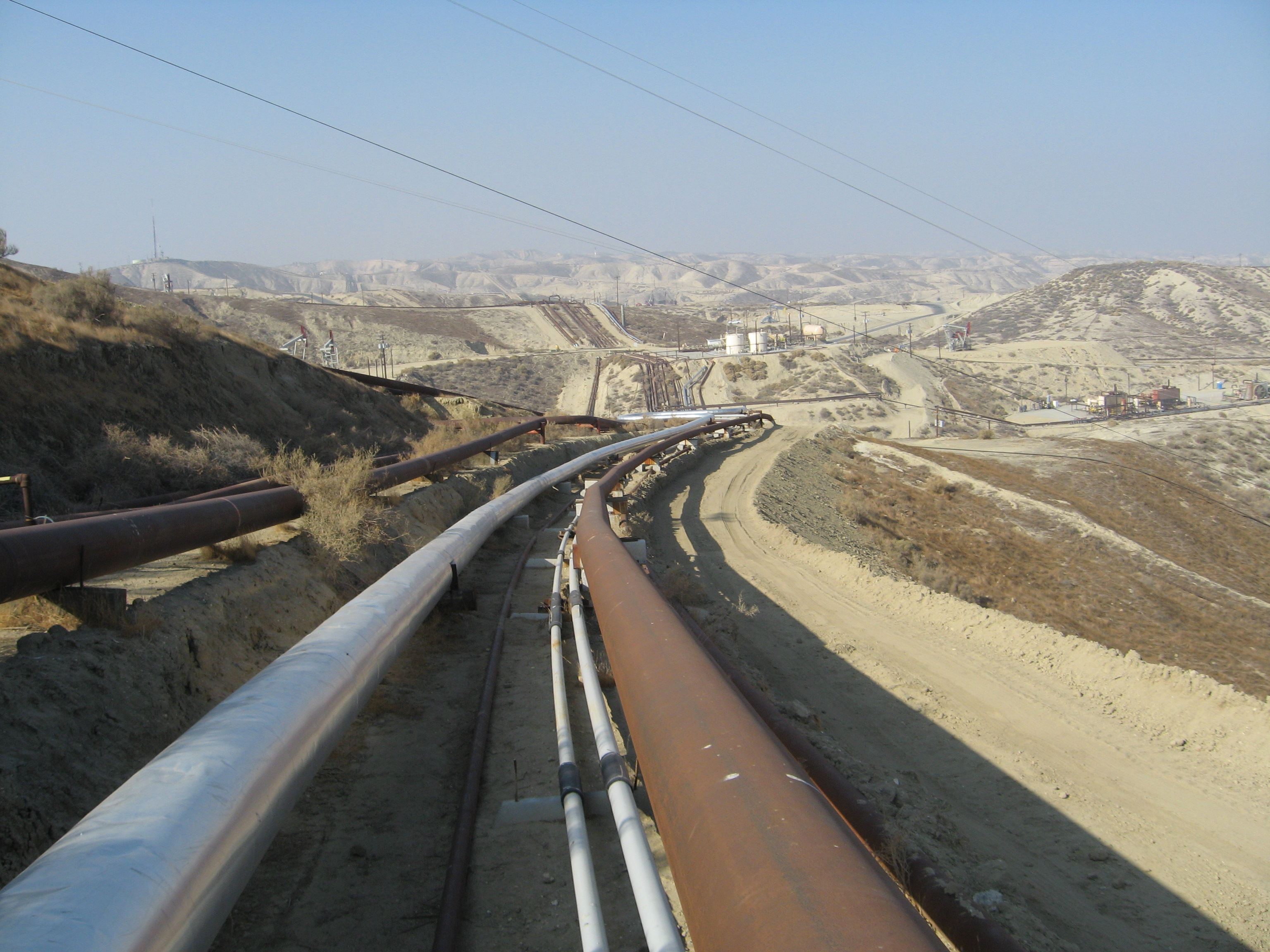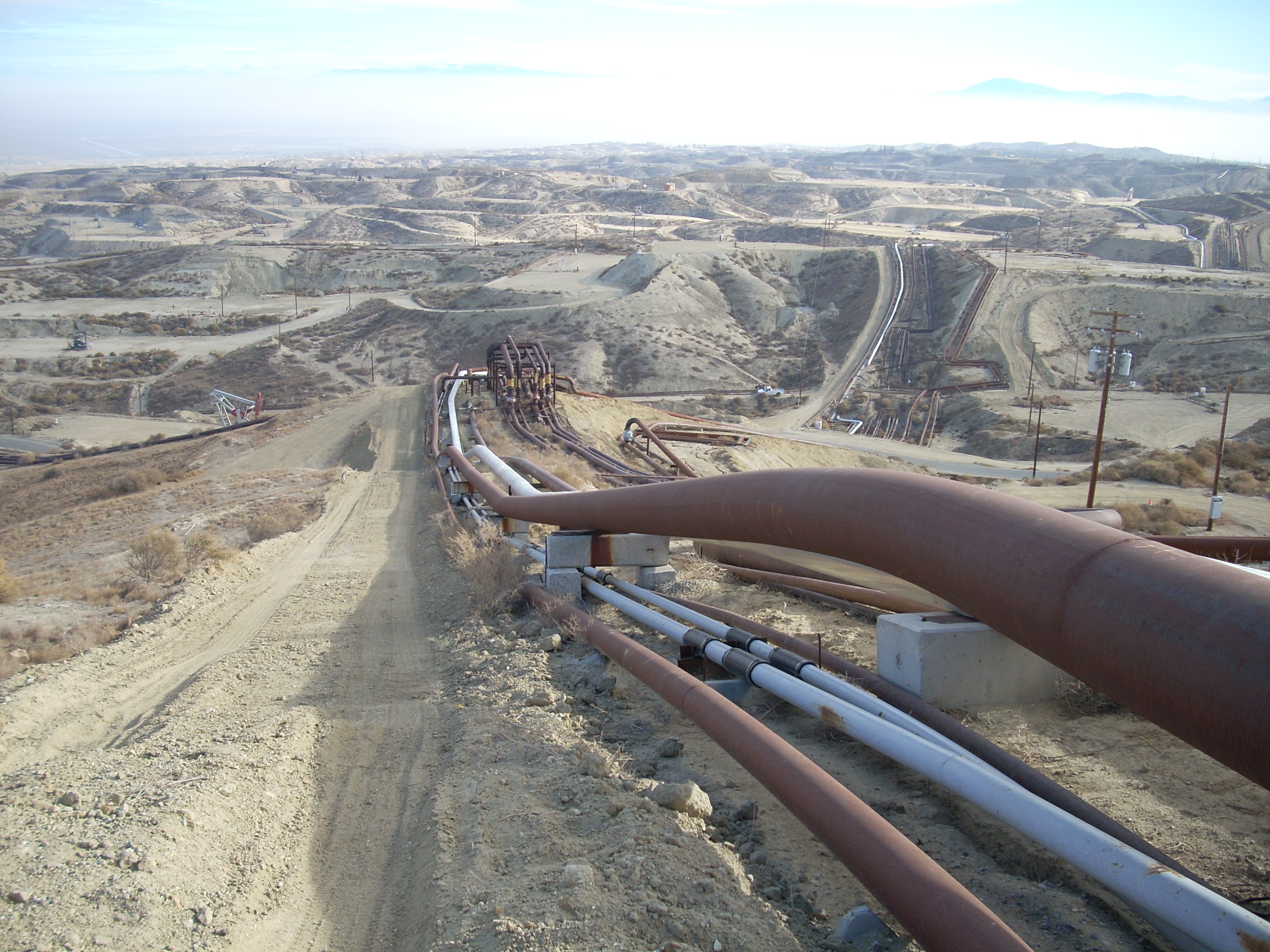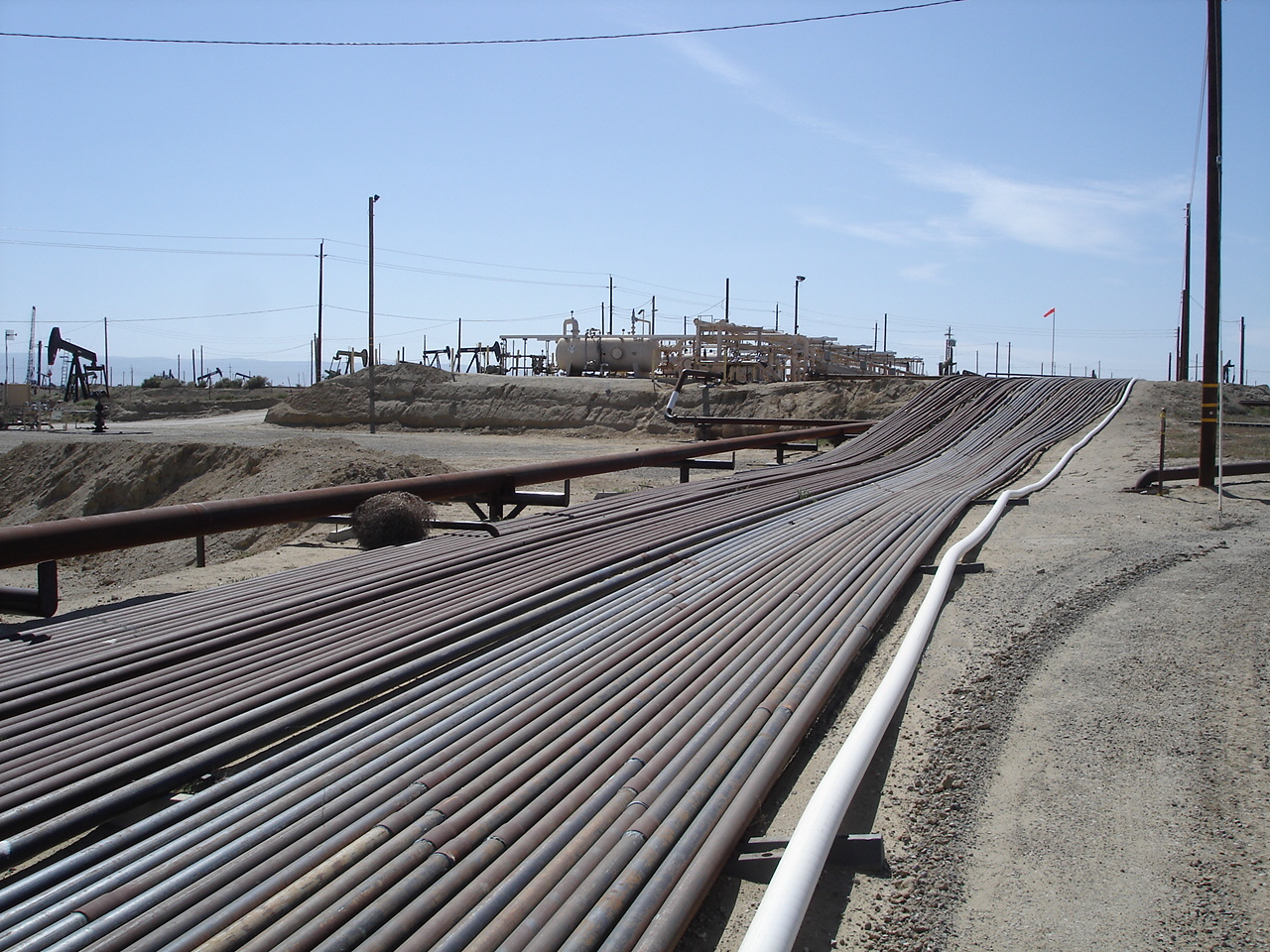Pipeline
A pipeline is a system of pipes used to transport crude oil, natural gas, or refined petroleum products from one location to another. These pipelines play a crucial role in the transportation of hydrocarbons from production sites to refineries, distribution centers, and ultimately to consumers. Pipelines are a cost effective and efficient means of moving large volumes of oil and gas over long distances.


Key Points about an Oil and Gas Pipeline System
Pipelines are a vital component of the energy infrastructure, enabling the efficient and safe movement of hydrocarbons from production areas to consumers.
Pipeline Infrastructure - The physical pipes that make up the pipeline network. These pipes are typically made of steel or other materials that can withstand the pressure and corrosion associated with transporting hydrocarbons.
Pumping and Compressor Stations - These stations are strategically located along the pipeline route to maintain the flow of oil and gas. Pumps and compressors are used to keep the hydrocarbons moving through the pipeline.
Valves and Control Systems - Valves are installed along the pipeline to control the flow of oil and gas, allowing for maintenance, adjustments, or emergency shut-offs. Control systems monitor and manage the pipeline operation.
Storage Tanks and Terminals - Pipelines are often connected to storage facilities and terminals where the oil or gas can be stored temporarily before further transportation or distribution.
Right-of-Way - Pipelines require a designated right-of-way, which is a strip of land where the pipeline is laid. Obtaining the necessary land rights and permits is a critical part of pipeline development.
Inspection and Maintenance - Regular inspections and maintenance activities are essential to ensure the integrity and safety of the pipeline system.
Key Points about the Pipeline Design Process
Designing a pipeline involves careful consideration of various factors to ensure the safe, efficient, and reliable transportation of hydrocarbons. The design process is comprehensive and requires collaboration among various disciplines, including mechanical engineering, civil engineering, environmental science, and regulatory compliance experts. Additionally, ongoing advancements in technology and industry best practices influence the design of modern pipelines.
Type of Product - The nature of the transported product affects the pipeline design. Different products have varying characteristics, such as viscosity, density, and corrosiveness, which impact the choice of materials and design specifications.
Pipeline Diameter and Capacity - Determining the appropriate diameter of the pipeline is crucial to accommodate the volume of product to be transported. The capacity of the pipeline should match the expected demand and future growth.
Pressure Requirements - The pressure at which the product needs to be transported is a critical design parameter. This influences the thickness and strength of the pipeline walls, as well as the selection of pumps or compressors at various points along the route.
Pipeline Route - Selecting the optimal route involves considerations such as topography, geological features, environmental impact, and land use. Engineers aim to minimize environmental disruption and select routes that are both technically feasible and cost effective.
Material Selection - Choosing the right materials for pipeline construction is essential for safety, longevity, and cost effectiveness. Common materials include carbon steel, stainless steel, and certain alloys, depending on factors like corrosion resistance and strength.
Coating and Corrosion Protection - To prevent corrosion and ensure the longevity of the pipeline, protective coatings and cathodic protection systems are applied. These measures help mitigate the effects of environmental conditions and soil corrosivity.
Safety Measures - Designers incorporate safety features such as emergency shut-off valves, pressure relief systems, and leak detection systems to minimize the risk of accidents and respond quickly to any incidents.
Regulatory Compliance - Adherence to local, national, and international regulations is critical. Designers must consider environmental regulations, safety standards, and permitting requirements in the design process.
Topographic and Geotechnical Considerations - The terrain through which the pipeline passes, including elevation changes, river crossings, and seismic activity, influences the design. Geotechnical studies help determine soil stability and support for the pipeline.
Hydraulic Considerations - Engineers analyze the hydraulics of the pipeline system to ensure proper flow rates, pressure drops, and pump or compressor requirements at different points along the route.
Pipeline Connectivity - Designers consider the integration of the pipeline into existing infrastructure, such as connecting to storage facilities, refineries, or other pipelines.
Emergency Response Planning - Planning for potential emergencies, including leak detection, containment, and response procedures, is crucial for minimizing environmental impact and ensuring public safety.
General Steps for Sizing a Pipe System
Sizing a pipe system involves determining the appropriate pipe diameter to ensure the system can handle the required flow rate with acceptable pressure drop. It's important to note that the specific steps and equations used may vary based on the type of system (water supply, HVAC, industrial process piping) and the applicable industry standards. Always refer to relevant codes and guidelines specific to your application. Additionally, consulting with a qualified engineer or using specialized software tools can assist in the accurate sizing of a pipe system.
Define System Requirements - Understand the required flow rate for your application. This could be based on factors like the amount of fluid that needs to be transported or the heat load in a heating system.
Gather Fluid Properties - Know the properties of the fluid being transported, such as density, viscosity, and any other relevant properties.
Determine the Pressure Drop Limit - Establish the maximum allowable pressure drop across the system. This is often a critical factor in sizing pipes, especially in applications where pressure is crucial.
Select a Pipe Material - Choose the material for the pipes based on factors such as the type of fluid, temperature, and corrosion resistance. Different materials have different friction factors, affecting the pressure drop.
Calculate the Total Dynamic Head (TDH) - If the system involves pumps, calculate the total dynamic head, which is the sum of the elevation head, friction head losses, and other losses. This is crucial in determining the required pressure at the pump.
Determine the Pipe Length - Measure the total length of the pipe run, including straight sections, elbows, valves, and other fittings.
Use the Darcy-Weisbach Equation - Apply the Darcy-Weisbach equation to calculate the frictional losses in the pipes. Adjust the pipe diameter until the calculated pressure drop meets the specified limit.
Consider Velocity Limits - Ensure that the fluid velocity in the pipes falls within acceptable limits. High velocities can lead to increased friction losses and potential erosion, while low velocities may result in inadequate mixing.
Check for Cavitation and Water Hammer - Evaluate the system for the possibility of cavitation or water hammer, especially in systems with pumps and valves. Adjust pipe sizes or incorporate control devices as needed.
Review and Revise - Review the initial pipe sizes and system layout. Make adjustments as necessary to meet the flow and pressure requirements. Iterate the process until a satisfactory solution is achieved.
Consult Applicable Codes and Standards - Ensure that your design complies with relevant industry codes and standards. Different industries may have specific guidelines for pipe sizing.
Consider Future Expansion - If applicable, account for potential future expansions or changes in demand when sizing the pipes.
Documentation - Document the selected pipe sizes, lengths, and any other relevant information. This documentation is crucial for construction and maintenance.




